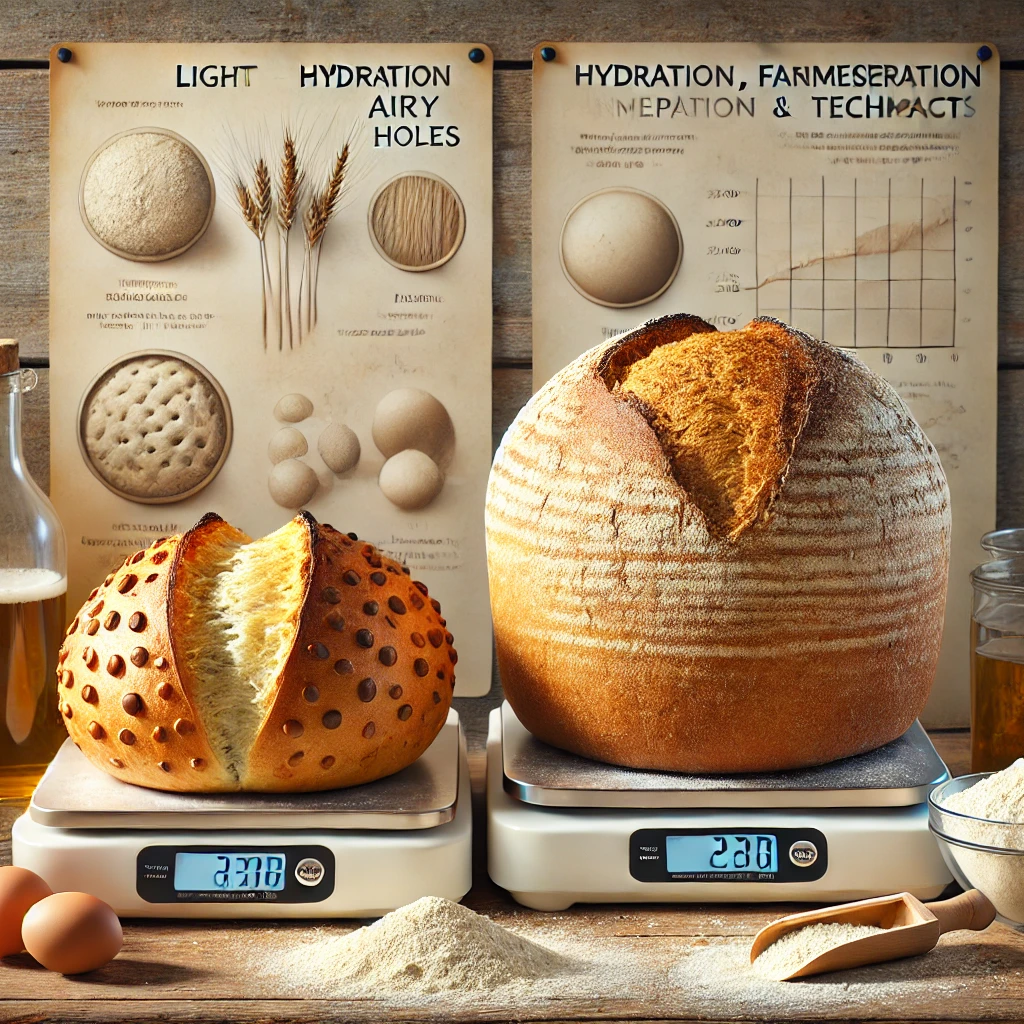Light, airy bread with an open crumb and delicate texture is the dream of many home bakers. Whether you’re after a lofty sourdough, a rustic ciabatta, or a soft sandwich loaf with bounce, the key lies in understanding what makes dough rise beautifully and how to support that rise throughout the baking process.
In this article, you’ll discover essential techniques and practical adjustments you can apply to make your homemade bread lighter, taller, and full of that sought-after airiness.
1. Start with High Hydration
Hydration is the ratio of water to flour in your dough. Higher hydration allows for a looser, more extensible dough that can trap more gas bubbles during fermentation.
Typical hydration levels:
- Sandwich bread: 60–65%
- Sourdough: 70–75%
- Ciabatta: 75–85% (very wet!)
Tip: Start with 70% hydration and work your way up as you gain confidence handling wetter doughs.
Use a digital scale to measure water and flour by weight for accuracy.
2. Use Bread Flour Instead of All-Purpose
Bread flour has more protein (usually 12–14%), which supports stronger gluten development.
Why it matters:
- Stronger gluten = better gas retention = more air bubbles
- Helps structure the rise without collapsing
If you only have all-purpose flour, you can still make great bread—but for open crumb and structure, bread flour performs best.
3. Kneading vs. Stretch-and-Fold
Traditional kneading builds gluten quickly, but for higher hydration doughs, stretch-and-fold is gentler and more effective.
How it works:
- Rest your mixed dough for 30 minutes.
- Gently stretch one side of the dough and fold it over the center.
- Rotate the bowl and repeat on all sides.
- Do 3–4 rounds, spaced 30 minutes apart.
This method develops strength without deflating the dough, allowing it to stay airy and soft.
4. Give It Time—But Not Too Much
Fermentation is where the dough gets its rise. Longer fermentation:
- Enhances flavor
- Allows for better gluten development
- Creates more gas, which gives you that light texture
However, over-fermenting will cause dough to collapse. It’s a balance.
Watch for signs it’s ready:
- Bulk fermentation: Dough has doubled in size and feels airy
- Final proof: Slight jiggle and a slow spring-back when poked
5. Use Preferments or a Starter
Preferments like poolish, biga, or sourdough starter pre-develop gluten and flavor.
Benefits:
- Adds structure
- Encourages extensibility
- Enhances fermentation activity
Even a 4-hour preferment makes a noticeable difference in volume and flavor.
6. Shape Gently to Preserve Air
Shaping is your chance to build tension in the surface of the dough—but too much degassing will ruin the internal structure.
Tips:
- Handle the dough delicately
- Do not punch down—fold instead
- Avoid over-tightening while shaping; aim for smoothness without compression
7. Use Steam in the Oven
Steam during the first phase of baking keeps the crust soft, allowing the bread to rise fully before setting.
Create steam:
- Bake in a Dutch oven with the lid on for 20 minutes
- Or place a tray of hot water in the oven
- Spray the oven walls with water when adding the bread
This encourages great oven spring, helping your bread lift and expand.
8. Preheat Thoroughly
A hot oven helps create a rapid initial rise, called oven spring.
Preheat for at least 30–45 minutes with a baking stone, steel, or Dutch oven inside to ensure heat retention.
Aim for 450°F to 475°F (232°C to 246°C), depending on the type of bread.
9. Score With Confidence
Proper scoring lets your bread expand without tearing. Use a sharp blade and quick, deliberate cuts.
This prevents pressure buildup inside the loaf, which can lead to uneven or collapsed results.
10. Cool Before Cutting
If you slice hot bread, steam escapes too quickly and compresses the crumb.
Always let bread cool completely (at least 1 hour) before cutting. This sets the structure and keeps the inside fluffy.
Final Thoughts
Making lighter, airier bread comes down to a combination of hydration, fermentation, gluten development, and gentle handling. It’s part technique, part practice—and once you start paying attention to these details, your loaves will improve dramatically.
Every airy pocket and soft bite will remind you: great bread is all about giving the dough the conditions it needs to rise.
